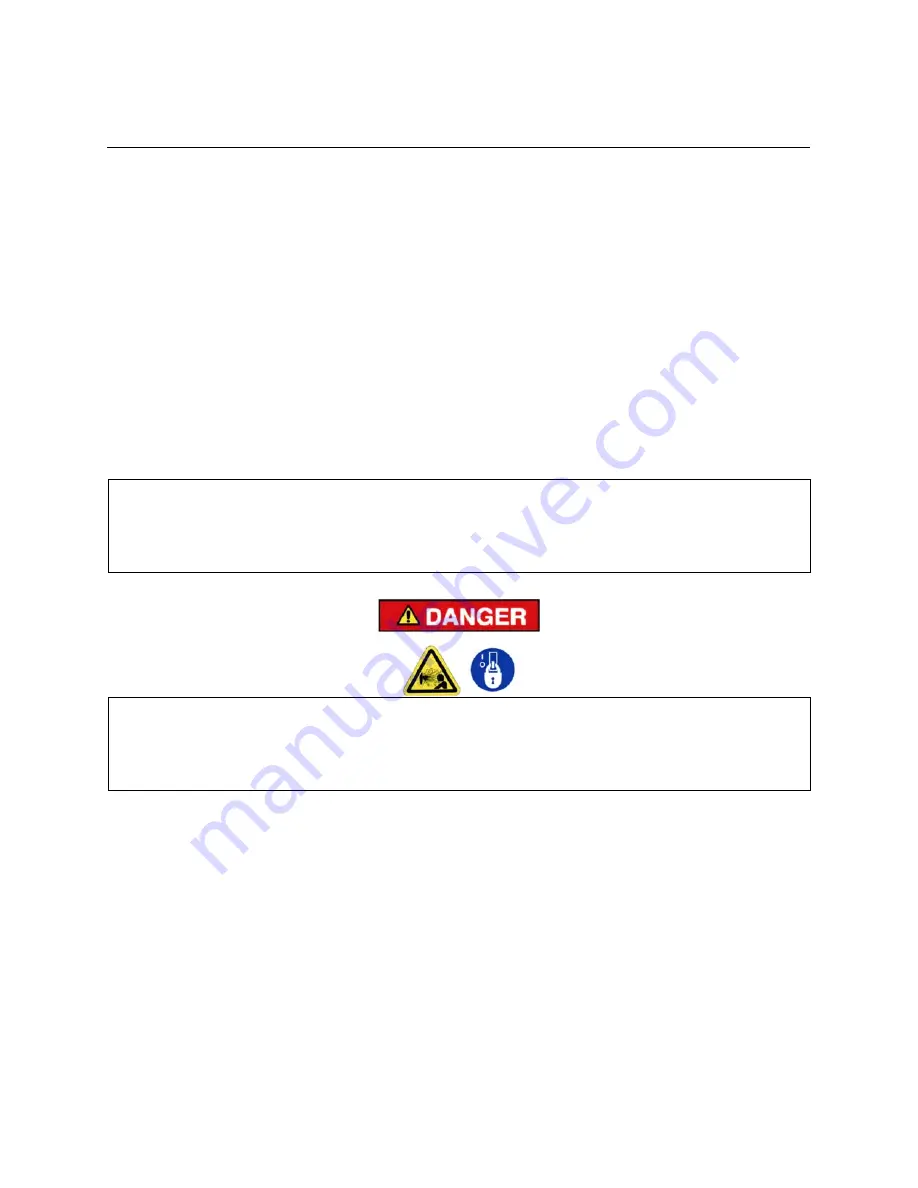
13-9-663 Page 23
SECTION 3
STARTING & OPERATING PROCEDURES
PRESTART-UP INSTRUCTIONS
- A new unit as received from the factory has been tested and then prepared
for shipping only. Do not attempt to operate the unit until checked and serviced as follows:
1.
Compressor Oil
- Check the oil level in the reservoir. Add oil only if the oil level gauge reads in the
red “ADD OIL” range. Do not mix different type oils. The unit is shipped filled with Gardner Denver
AEON 9000 SP Lubricating Coolant which is suitable for the first 8000 hours under normal operating
conditions.
REPLACE OIL FILTER EVERY 1000 HOURS
Initial fill, or filling after a complete draining of the system, may show the oil level in the yellow
“EXCESS OIL” range. After start-up, the oil will fall into the green operating range as system
components are filled. If necessary, add oil to bring the level to the top of the green range as read
when the unit is operating at full load and normal pressure. See
Figure 5-7
, page 53.
N
N
N
O
O
O
T
T
T
I
I
I
C
C
C
E
E
E
Regular maintenance and replacement at required intervals of the oil filter, air
filter and air/oil separator is necessary to achieve maximum service and
extended drain intervals of AEON 9000 SP synthetic lubricant. Use only
genuine Gardner Denver filters designed and specified for this compressor.
Before removing the oil filler plug, always stop the unit and release air
pressure, lockout and tagout the power supply to the starter. Failure to release
pressure or properly disconnect the power may result in personal injury or
death.
During unloaded operation and after shutdown, the system will partially drain back into the oil
reservoir and the oil level may read higher than when operating on load. DO NOT DRAIN OIL TO
CORRECT; on the next loaded cycle or start, oil will again fill the system and the gauge will indicate
the operating level.
2.
Air Filter
- Inspect the air filter to be sure it is clean and tightly assembled. Refer to Section 6, for
complete servicing instructions. Be sure the inlet line, if used, is tight and clean.
3.
Coupling
- Check all bolts and cap screws for tightness. See Section 7.
4.
Piping
- Refer to Section 2, “Installation", and make sure piping meets all recommendations.
5.
Electrical
- Check the wiring diagrams furnished with the unit to be sure it is properly wired. See
Figure 4-13 thru Figure 4-16, pages 40 thru 43, for general wiring diagrams and Section 2, for
installation instructions.
















































